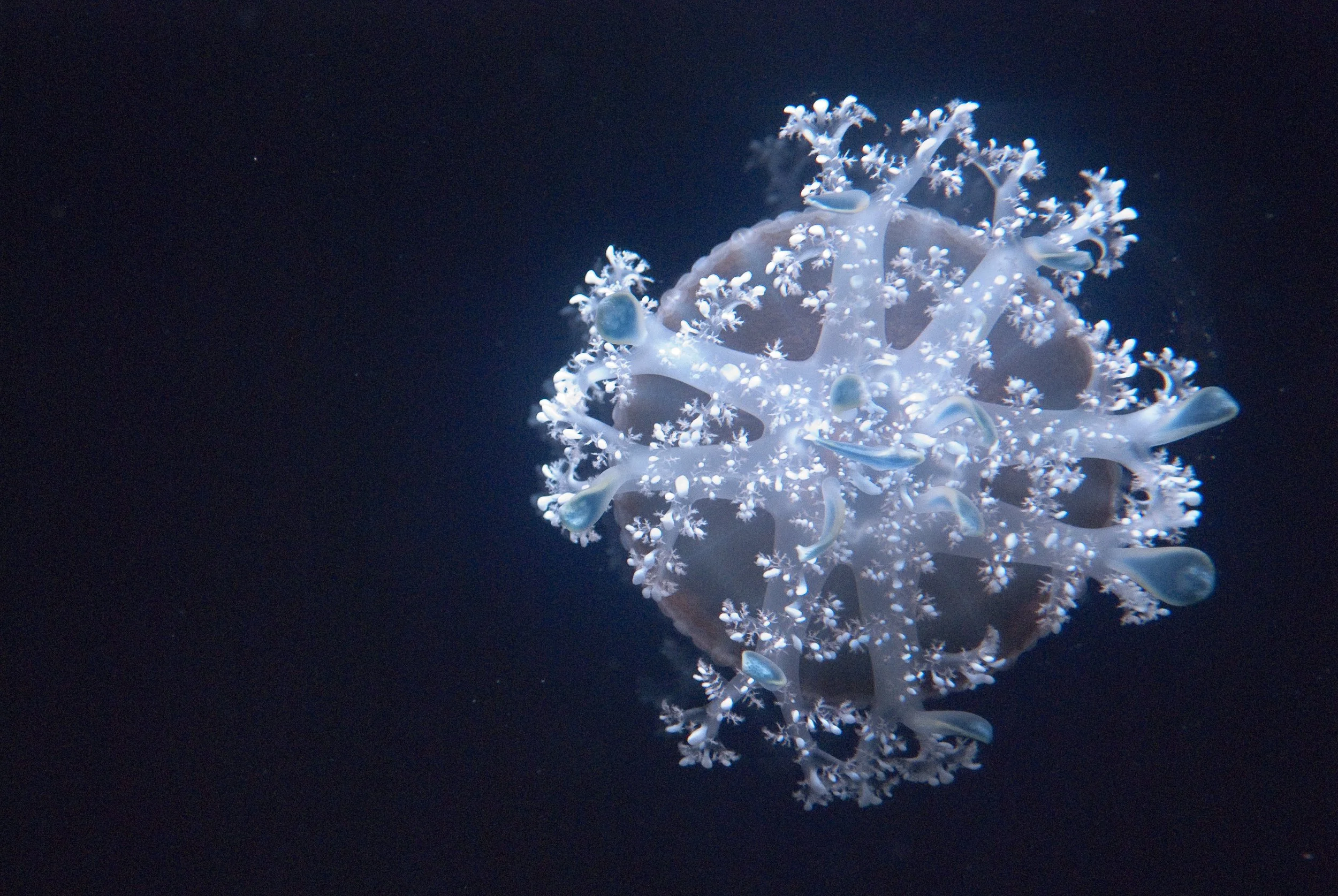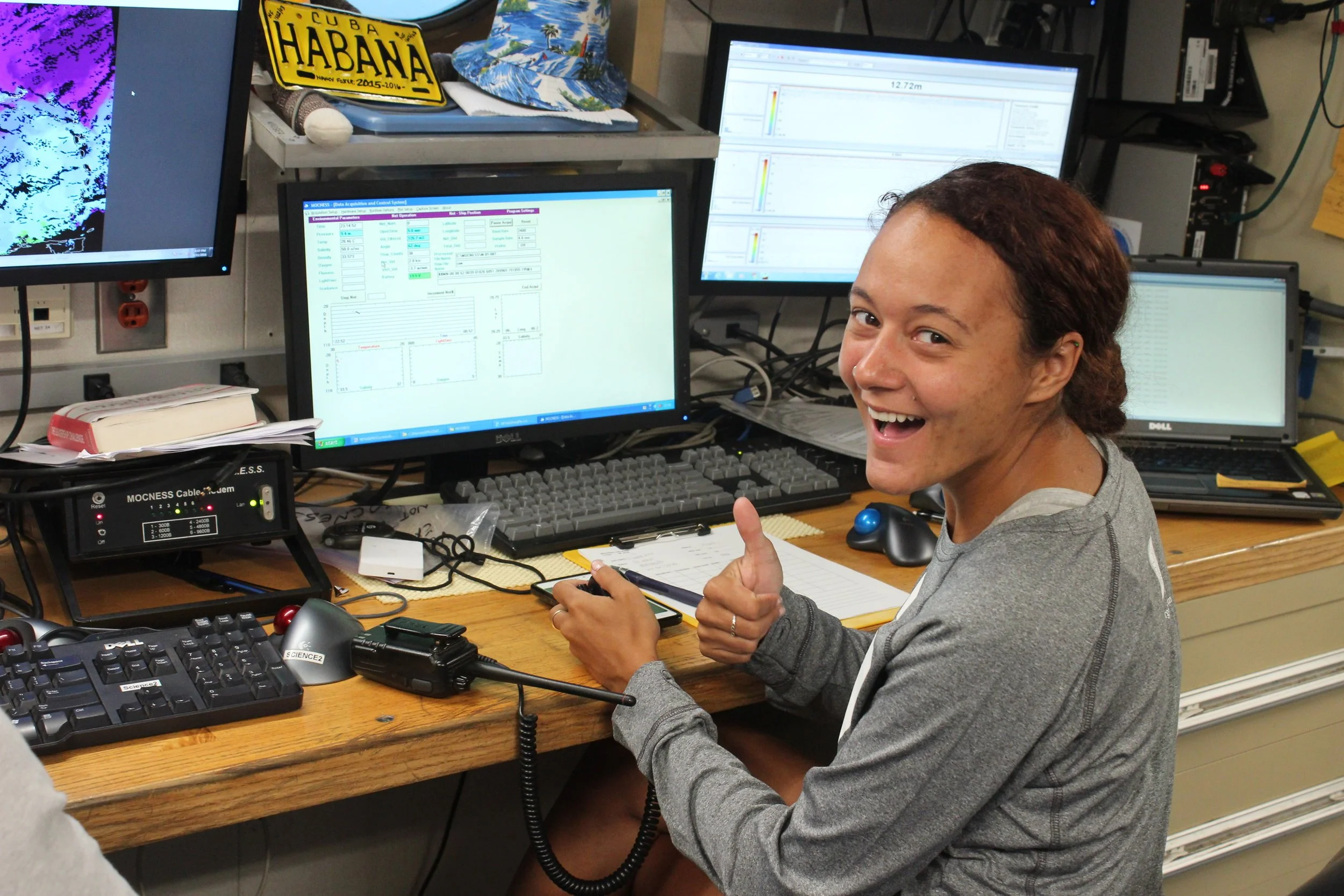Zooplankton Abundance & Distribution in the Territory Has Never Been Studied, Until Now.
Microscopic plankton.
This image is a sampling of the zooplankton found in Brewers Bay, St. Thomas.
Under the direction of Virgin Islands' native Dr. SennaiHabtes, professor of biological oceanography at The University of the Virgin Islands Center for Marine and Environmental Studies, Master of Science in Marine and Environmental Science candidate Mara Duke is studying zooplankton abundance and distribution surrounding Brewers Bay, St. Thomas, USVI. This research is part of an ecosystem analysis study of Brewers Bay funded by VI EPSCoR’s Mare Nostrum program. The purpose of this overall study is to gain unique insight into how environmental conditions impact all levels of the ecosystem within a small coastal bay with highly diverse habitat types.
Mara takes monthly samples of zooplankton using a 500 micrometer net which is towed across the water column. The collected samples are sorted and stored for analysis in the lab.
Mara’s research includes monthly measurements of oceanographic conditions and samples of water quality at 33 stations in Brewers and Perseverance Bays, and at Flat Cay (the small island located to the Southwest of the Cyril E. King airport), as well as identifying and quantifying the zooplankton from four plankton tows spread out among the study area.
The data on oceanographic conditions will be collected using a CTD, a common piece of oceanographic instrumentation that is a package of electronic instruments that measures salinity, temperature, depth, chlorophyll and turbidity. In addition water quality measurements of enterococci and fecal coliform bacteria, nutrient concentrations, and total suspended solids are taken on a quarterly basis by collecting water samples and analyzing them at the Environmental Analysis Laboratory (EAL).
Mara prepares to deploy a Niskin which tests for nutrients, bacteria and total suspended solids in the water.
The findings of this research will lead to a better understanding of seasonal and environmental influences regulating zooplankton abundance and distributions. As an important level towards the base of most marine food webs, and understanding changes in this group of organisms, can have important implications for how things like climate change, episodic events like hurricanes, and natural seasonal variation affect coastal ecosystems, and how those will in turn affect higher levels in marine food webs. Time-series data on zooplankton abundance surrounding the USVI has never before been undertaken and will provide critical information. Potentially, this information can help guide fisheries and environmental management and policy within the territory.
In addition to Mara’s work in the Oceanographic Research Laboratory at UVI (“The Ocean Lab” for short), she was one of four graduate students invited to take part in the Coral Reef Ecosystem Research (CRER) research cruise onboard the NOAA research vessel
. This annual research cruise in USVI waters provided the opportunity to collects data on physical oceanography and larval reef fish abundance in an effort to understand the physical and biological processes that drive spawning and circulation of important commercial reef fish species in the territory.
From northern Wisconsin, Mara earned her undergraduate degree in Aquatic Biology, specializing in aquatic biology at the University of Wisconsin, Superior. A semester abroad in Fiji cemented her desire to pursue a masters in Marine Science. While at UVI she has worked with fellow candidate Danie to take a closer look at
in the environment, specifically what microplastics are found in the water column. Sadly, she finds approximately 30 – 40 pieces of poly rope in every sample. These ropes are commonly used for moorings, anchor lines and bouys, all directly related to the high boating activity seen in this area.
Mara at work on the Nancy Foster
The entire team at VI-EPSCoR is excited to learn of all Mara’s discoveries as she continues to forge ahead with this necessary and challenging project.
VI-EPSCoR is a territorial program of the National Science Foundation hosted by the University of the Virgin Islands. Mare Nostrum Caribbean was awarded funding by the NSF in August 2014. It presents a unique opportunity to address the implications of climate change in our Territory. This goal is achieved through support for coral reef research and emerging research areas including oceanography, watershed dynamics and human dimensions. In addition, STEM programs are supported to help encourage a scientifically literate public. A critical priority is the development of an educated and skilled workforce.





